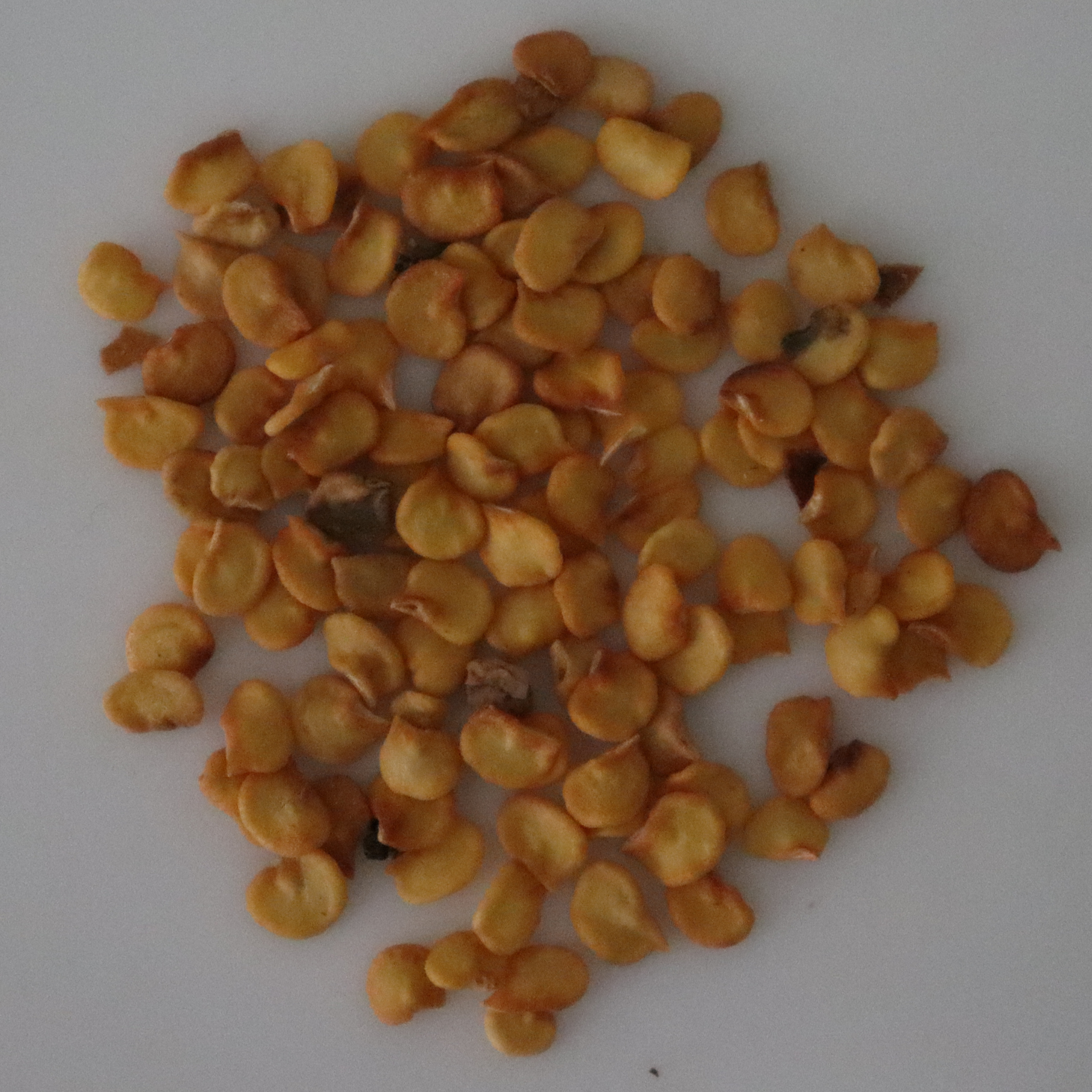

Product Description - Organic Pusa Sadabahar Chilly Seeds - Open Pollinated
Pusa Sadabahar Chilli is a perennial plant that produces chilli for three years in a row. It is resistant to the virus that causes leaf curl. It produces clusters of fruits. Fruit-bearing is done in an upright position. Typically, each cluster has 5-8 fruits. This will last up to three years if properly cared for over the winter. The plant grows to a height of 60.0-80.0 cm. The growth pattern is upright. The leaves are wide and dark green.
Benefits/Uses of Pusa Sadabahar Chilly
- As with most peppers, the Pusa Sadabahar Chilly is high in vitamin C, which helps the immune system.
- Additionally, there is a healthy dosage of vitamin A, iron, and capsaicin, the component of chilli peppers that gives them their spiciness.
- This molecule is anti-inflammatory and has several beneficial properties, including increasing metabolism.
- Additionally, studies indicate that capsaicin may help lessen the risk of cancer.
Specifications of Pusa Sadabahar Chilly Seeds
|
Common name |
Pusa Sadabahar Chilly |
|
Sunlight |
Minimum of 5 hours per day |
|
Water |
Don't overwater; watering with a sprayer causes more impact |
|
Temperature |
65-80 deg |
|
Soil |
Loam soil |
|
Fertilizer |
Organic fertilizer |
|
Germination |
8-14 days |
|
Harvest season |
· About 90 days after chilly has flowered · All seasons |
|
No. of seeds |
75+ |
Planting and Care for Pusa Sadabahar Chilly
Sowing Pusa Sadabahar Chilly Seeds
- Choose a sunny, sheltered location with fertile, well-drained soil.
- Before planting, use a general-purpose fertilizer, preferably Veg and Fruit Fertiliser Mix 100% Organic.
- Grow in compost-filled grow bags or in grow bags.
- Sow two seeds in a compost-filled coco peat grow bag; once both seedlings have emerged, remove the weaker one.
- Using a humic acid growth promoter will help your plants' root development and metabolism, as well as seed germination.
- Keep your plant well-watered at all times.
Growing Pusa Sadabahar Chilly
- Provide nourishment for your plants, and they will provide nourishment for you. Because plants absorb nutrients from the soil as they grow, replacing them guarantees that your plants reach their maximum potential.
- Use A2 Desi Cow Panchagavya Organic Growth Promoter to chillies sown in grow bags. Maintain adequate moisture in the soil throughout the growing season.
- While your chillies are developing typically, give them a boost with a dosage of Seaweed Extract Liquid Growth Promoter.
- Chillies that are well-watered and well-nourished have a better chance of warding off insect pests and diseases.
- Once the stems get tall enough, provide support.
Harvesting Pusa Sadabahar Chilly
- Chillies mature in around three months.
- When the chillies are ready, cut them from the plants - do not pull them from the plant as they will frequently rip—the plant's colour and flavour change as it grows.
- In 45-60 days, fruiting will begin. Choose as needed. As the chillies ripen, their colour will likely alter. They tend to become hotter the longer they are left on the plant.
Precautions while growing Pusa Sadabahar Chilly
- Eliminate any weeds that have established themselves around the chilli plant.
- Flowers are harmed by high heat and wind.
- Use Garden Agro Shade Net 50% Shade UV Stabilized if it is too sunny.
- The planting timing should be determined during the day.
- This plant thrives when the daytime temperature is between 65 and 80 degrees Fahrenheit.
Common Problems affecting Pusa Sadabahar Chilly Plants and Solutions
Maintain vigilance and prevent unwelcome insects and illnesses from wreaking havoc on your plants. Slugs and snails can be a problem; safeguard young plants with bio pest control for sucking and biting pests.
Small whiteflies feed on the sap of the plant and excrete sticky "honeydew," which stimulates the growth of sooty mould in the terrace garden, which can be managed biologically using bio pest controller or using sticky traps.
Grey mould is a naturally occurring illness that thrives in moist or humid conditions. Spores enter plants via wounds, damaged tissue, and opened blooms. Mold may wreak havoc on fruit that is beginning to ripen, such as strawberries. Black resting spores survive the winter. The cure for this is to remove any infected plant components immediately. Eliminate hazardous debris and surgically remove infected areas to expose healthy tissue.
No. of Pusa Sadabahar Chilly Seeds - 100+





